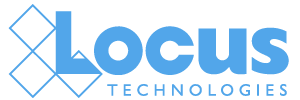See Your ESG Data Like Never Before
Todd Pierce explains in this short video how Locus Technologies data portability can be available for all your data needs.
Todd Pierce explains in this short video how Locus Technologies data portability can be available for all your data needs.
Todd Pierce explains in this short video how Locus Technologies data portability can be available for all your data needs.
Director of Sales Engineering, Steve Paff, highlights Locus Software’s configurable hierarchy and how versatile it can be.
One of the most frequent conversations we have is with EHS professionals who approach us with struggles concerning their current software solution. They often seek out Locus out of frustration, because their current software provider focuses almost exclusively on the safety side of EHS. While there’s nothing innately wrong with focusing on one aspect of EHS, most professionals need a more robust software to meet their needs. They need a solution that can handle the environmental side of EHS.
When we ask what they’re missing, it ranges depending on their current software, and most commonly these professionals don’t have the ability to automate environmental data collection, management, and reporting. They are, for the most part, entering everything by hand and reporting to local, state, and federal agencies manually. The lack of a proper solution from their current provider means that they’re doing more work and potentially misreporting due to repeat entry errors.
EHS professionals Must focus on a wide range of issues, and a lack of versatility in their software solution means that they have to work harder to fill in the gap in their existing process and software solutions. When Locus is approached, most of the time it’s by professionals seeking relief, and they find us because we offer a tool that both meets their needs and makes their work less stressful.
The environmental side of EHS is vast, and professionals are expected handle anything from air and GHG emissions to water, waste and beyond. And while other providers offer anything from a bare bones solution to enough to get by, Locus knows that a robust solution can reduce the burden, time, and potential inaccuracies that EHS professionals face. We know because we’ve been there. Locus software is developed by and for EHS professionals. Our domain experts have had to deal with the struggles of subpar software, so that’s why we make a solution to fit the needs of our peers. That’s why our EHS software features a full suite of solutions, and a robust calculation engine.
Locus’s strategic focus has always been to deliver intelligent, well-designed software applications that add value to customers’ bottom lines. The success of these applications is rooted in the deep environmental domain and content experience of the Locus team, its proven data management capabilities, and its view that customers who own their data maintain a competitive advantage over those that don’t.
Locus’s perseverance developed the world’s first commercial online environmental information management, collaboration, and compliance system. Locus’ EIM revolutionized how environmental data is stored, accessed, managed, and reported— ultimately saving customers time and money and giving them the power to be “green on demand.” Locus Platform gave customers tools to consume EIM data in various applications built on top of it, communicating with each other. Locus delivered the industry’s first unified EHS compliance and ESG reporting system.
Locus SaaS has evolved to encompass more and more aspects of strategic business planning. While a critical incentive to using Locus Platform and EIM systems is regulatory compliance, Locus has taken a more comprehensive view of the mandate to improve environmental stewardship by creating plans to improve environmental performance across clients’ organizational silos; sites, and regulatory programs; emission sources to air, soil, or water; energy management; all aspects of Environmental Health and Safety (EH&S) issues, sustainability and ESG reporting, and technology platforms and mobile devices.
While most environmental software firms have focused on tracking one area of concern, such as greenhouse gases or incident management, Locus built the most comprehensive software platform for managing compliance and organizing environmental and resource data and information. Using Locus’ SaaS, customers can collect, organize, search, report, maintain, and preserve all the required documentation and data for environmental compliance and sustainability management. Locus integrates risk management, compliance, sustainability management, and water quality management under a single umbrella. Locus software integrates with other enterprise resource planning software—part of the big picture for governance, risk and compliance (GRC), risk management, compliance, and health and safety software.
Our holistic view of GRC enables transparency and connectivity across an organization – sparking the insights that most organizations need to make better decisions.
Our SaaS platform supports leading organizations by:
The resulting Locus applications, primarily EIM and Locus Platform, help companies better record, track, manage, analyze, and share information regarding water, air, energy, waste, sustainability, ESG, and EHS compliance management.
This is the sixth post highlighting the evolution of Locus Technologies over the past 25 years. The previous post can be found here. This series continues with Locus at 25 Years: Innovative Approach and Plans.
To celebrate a milestone 25 years of success in EHS and ESG software development, we sat down with Locus President, Wes Hawthorne for a brief discussion. In this post, we ask him a series of questions highlighting the past, present and future of EHS and ESG.
One of the persistent challenges we’ve seen for the past 25 years is that the responsibilities of environmental professionals are continually expanding. Previously, almost all environmental work was localized, with facility-level permits for air, water, waste, etc. That has expanded over the years to include new regulations and reporting requirements for sustainability, social metrics, and other new compliance areas, while the old facility-level programs still continue. This has led to more pressure on environmental managers to keep up with these programs, and increased reliance on tools to manage that information. That’s where Locus has always focused our effort, to make that ever-expanding workload more manageable with modern solutions.
The current flood of interest in ESG is certainly notable as far as bringing corporate attention to the environmental field, as well as having requirements originate from the SEC here in the US. We have become accustomed to managing oversight from multiple regulatory bodies at the local, state, and federal level, but SEC would be a newcomer in our line of work. Their involvement will be accompanied by a range of new requirements that are common for the financial world, but would be unfamiliar to environmental staff.
Across other EHS fields, we are seeing increased demand for transparency in EHS functions. Overall, this is a positive move, as it brings more attention to EHS issues and develops a better EHS culture within organizations. But this also drives the need for better tools to make EHS information readily available across all levels of the organization.
As far as technologies, the ones most likely to have significant impact in the environmental field are ones that don’t require a significant capital investment. Although there are definitely some practical advantages to installing smart monitoring devices and other new technologies, procuring the funding for those purchases is often difficult for environmental professionals. Fortunately, there are still many technologies that have already been implemented successfully in other fields, but only need to be adapted for environmental purposes. Even simple changes like using web-based software in place of spreadsheets can have a huge impact on efficiency. And we haven’t yet seen the full impact of the proliferation of mobile devices on EHS functions. We are still working on new ways to take advantage of mobile devices for data collection, analysis, and communication purposes.
We’ve seen a number of innovation milestones in the past 25 years, and while we didn’t invent SaaS, we’ve been largely responsible for adapting it and perfecting it for environmental purposes. One of the major innovations we’ve integrated into our products include online GIS tools where users can easily visualize their environmental data on maps without expensive desktop software. Another one was our fully configurable software platform with built-in form, workflow, and report builders tailored for environmental purposes, which allows anyone to build and deploy environmental software applications that exactly match their needs. There have been many other innovations we’ve incorporated into our software, but these two stand out as the most impactful.
More and more, we are seeing all types of reporting being converted into pure data exchanges. Reports that used to include regulatory forms and text interpretations are being replaced with text or XML file submittals. This transition is being driven largely by availability of technology for EHS professionals to generate and read these files, but it is also promoted by regulatory agencies and other stakeholders receiving these reports. Stakeholders have less time to read volumes of interpretive text, and are becoming more skeptical of potential bias in how facts are presented in text. These are driving the need for more pure data exchanges, with increasing emphasis on quantifiable metrics. These types of reports are also more readily compared against regulatory or industry standards. For reporters, lengthy corporate reports with volumes of text and graphics are becoming less common, and the success of an organization’s programs will be increasingly reliant on robust data sets, since ultimately only the data will be reported.
There are actually a few that immediately come to mind. One reason is the nature of our continually evolving products. By providing our solutions as SaaS, our software adapts with new environmental requirements, and with new technologies. If our software was still the same as it was 25 years ago, it simply wouldn’t be sufficient for today’s requirements. Since our software is updated multiple times each year, it is difficult to notice the incremental changes, but they can be readily seen if you compare today’s software with the original in 1997. And we’re committed to continuing the development of our products as environmental needs change.
The other primary reason for our success is our excellent staff and the environmental expertise we bring to our customers. We simply could not provide the same level of support without our team of environmental engineers, scientists, geologists, chemists, and an array of others. Having that real-world understanding of environmental topics is how we’ve maintained customer relationships for multiple decades. And our software only has value because it is maintained and operated by staff who appreciate the complexity and importance of environmental work.
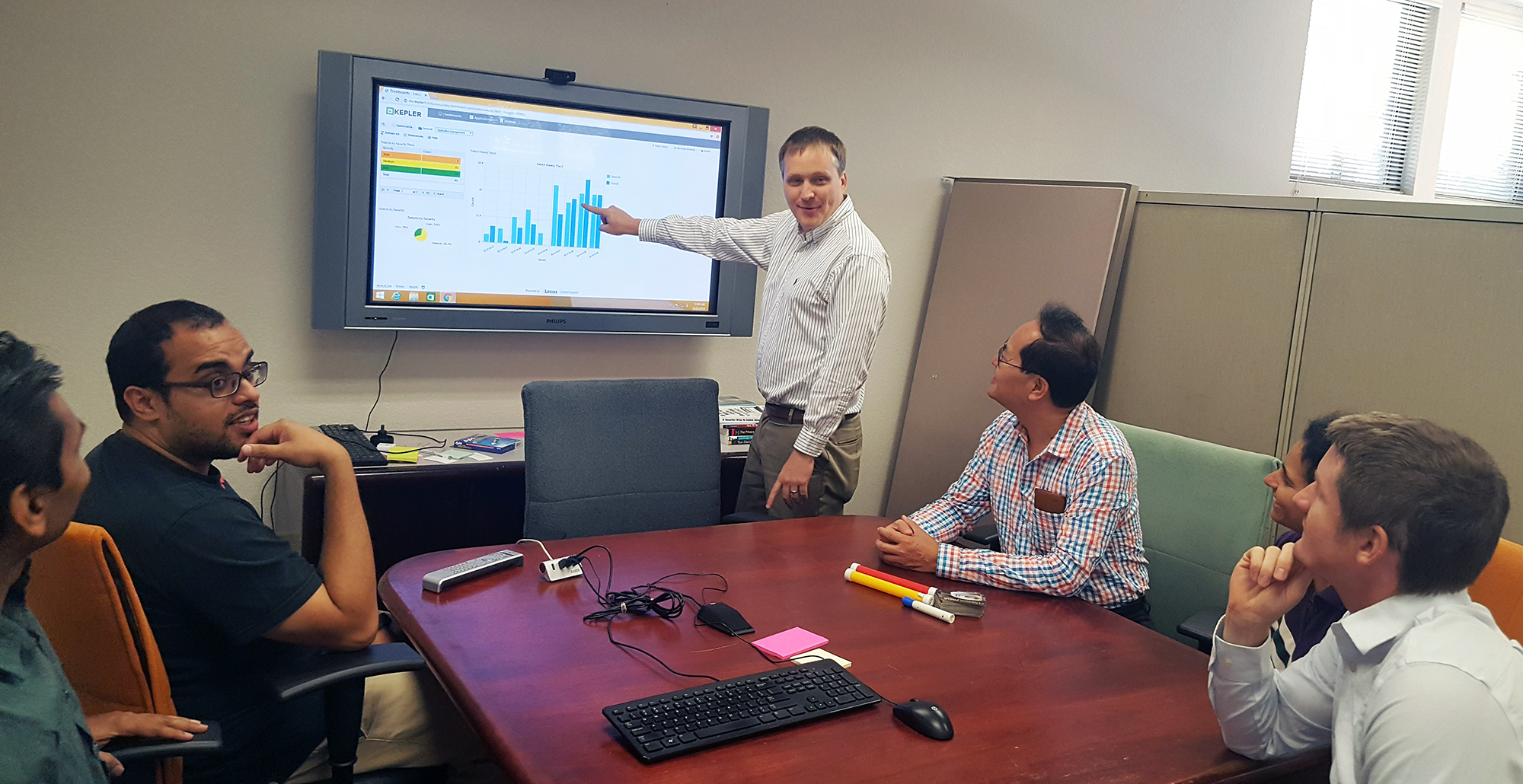 Mr. Hawthorne has been with Locus since 1999, working on development and implementation of services and solutions in the areas of environmental compliance, remediation, and sustainability. As President, he currently leads the overall product development and operations of the company. As a seasoned environmental and engineering executive, Hawthorne incorporates innovative analytical tools and methods to develop strategies for customers for portfolio analysis, project implementation, and management. His comprehensive knowledge of technical and environmental compliance best practices and laws enable him to create customized, cost-effective and customer-focused solutions for the specialized needs of each customer.
Mr. Hawthorne has been with Locus since 1999, working on development and implementation of services and solutions in the areas of environmental compliance, remediation, and sustainability. As President, he currently leads the overall product development and operations of the company. As a seasoned environmental and engineering executive, Hawthorne incorporates innovative analytical tools and methods to develop strategies for customers for portfolio analysis, project implementation, and management. His comprehensive knowledge of technical and environmental compliance best practices and laws enable him to create customized, cost-effective and customer-focused solutions for the specialized needs of each customer.
Mr. Hawthorne holds an M.S. in Environmental Engineering from Stanford University and B.S. degrees in Geology and Geological Engineering from Purdue University. He is registered both as a Professional Engineer and Professional Geologist, and is also accredited as Lead Verifier for the Greenhouse Gas Emissions and Low Carbon Fuel Standard programs by the California Air Resources Board.
In August 2014, we wrote on the potential use of wearables for EHS professionals. Less than a year later, the Apple Watch was introduced, revolutionizing the market. Now, wearables in the EHS space aren’t a hypothetical. Roughly a fifth to a quarter of Americans wear a smartwatch daily. Wearables are undoubtedly one of the biggest trends in EHS, with a seemingly endless number of uses to promote a more efficient and safer workplace.
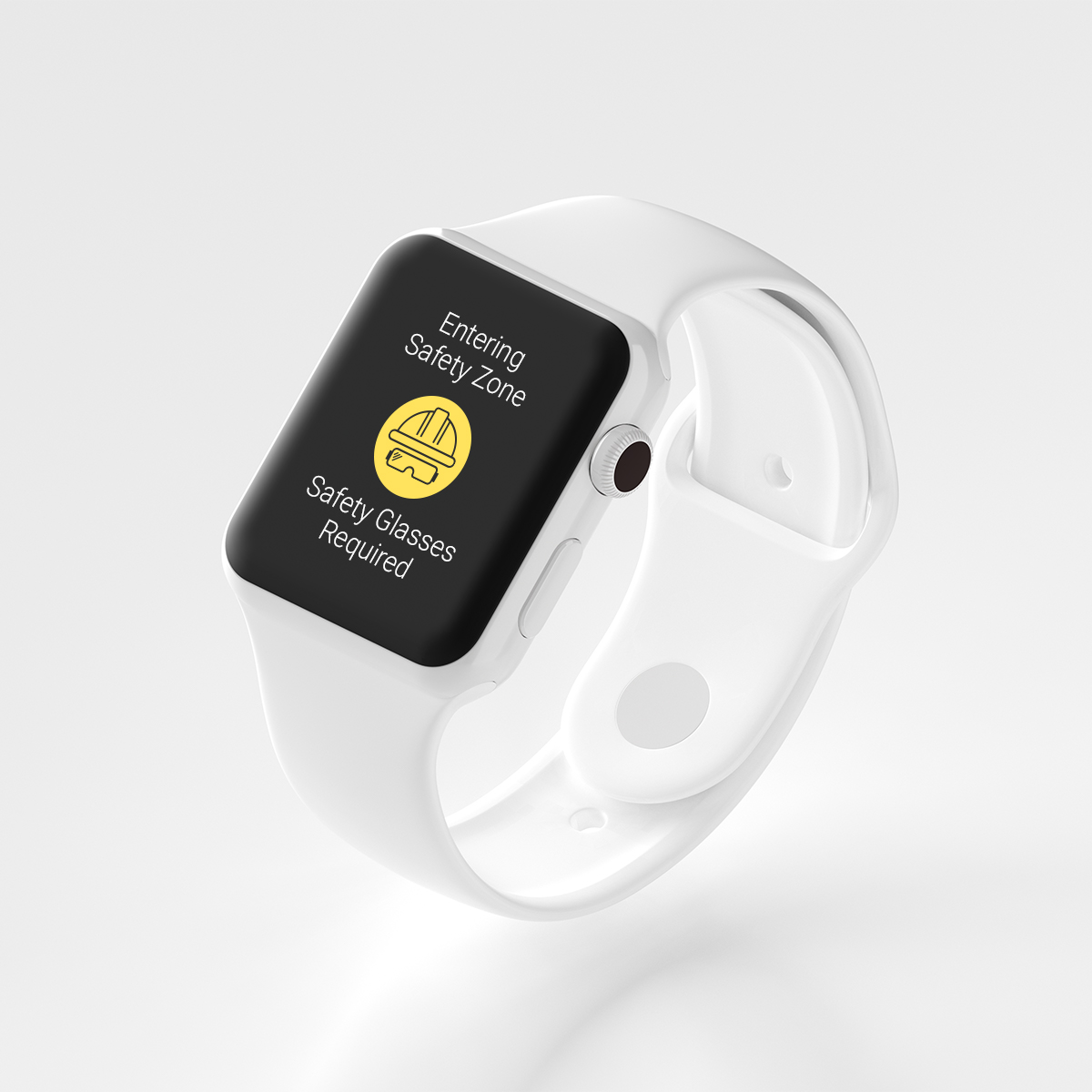
Despite recent growth, wearables are still in their infancy when it comes to EHS. Verdantix anticipates that companies will spend 800% more on connected worker devices in twenty years, an explosion in utilization. This year alone, over 20% of surveyed companies are reporting an increase in budget for wearables for EHS purposes. While demand from organizations is growing, most EHS software is yet to adapt to market needs, with few offering wearable support.
Locus is prepared to meet the needs of the market, by integrating wearable support with our mobile application. Here are a few ways to best utilize your smartwatch with Locus Mobile:
Custom and priority notifications can be tailored to fit the needs of professionals in your organization, increasing engagement and response time.
Calendar alerts directly to your wearable, so that no samples are missed by field technicians.
Get alerted when you’re entering a safety zone that requires specific PPE.
Track worker vital signs for faster response time in the event of an emergency.
If your organization is looking to implement wearable tech, Locus product specialists are ready to discuss your needs and how we can help.
The biggest differentiator between Locus and other EHS software providers is our support team. Not only do we pride ourselves on the quickest and most efficient resolutions in the industry, but on our human approach to support. Get to know our support team as we recently sat down (virtually) with them to talk about the ins and outs of their field, how it is working for Locus, and more.
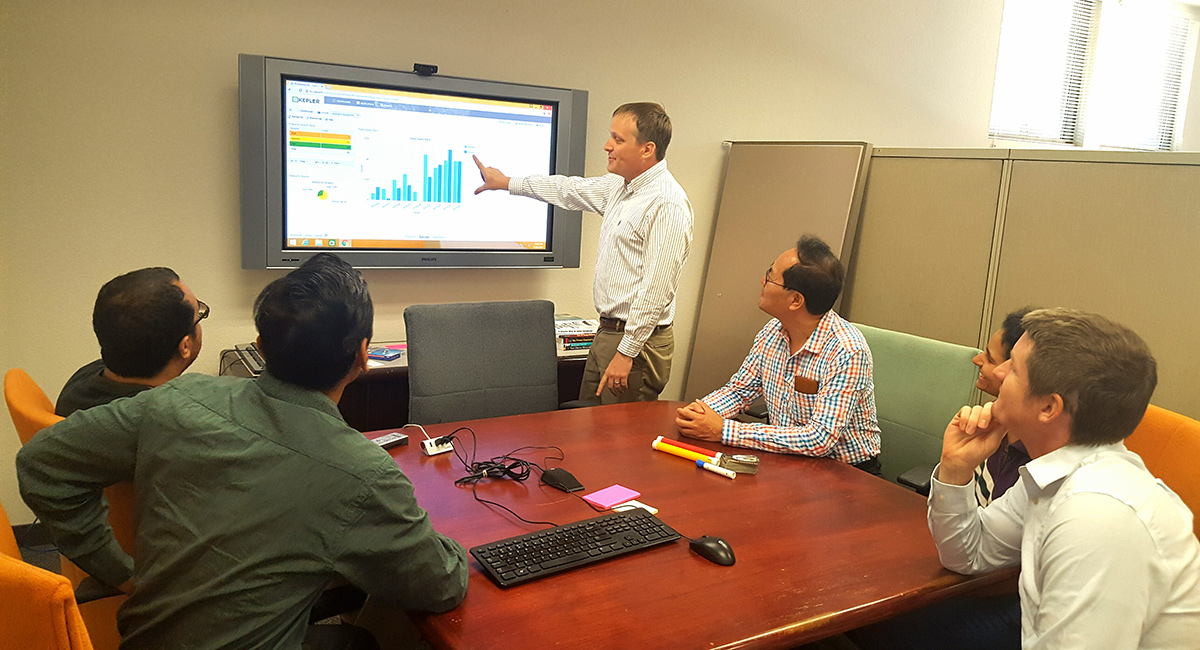
Our most common support case is user management related. Many times, our customers need assistance adding new users or updating their user lists. We receive a lot of requests for resetting passwords.
Almost ten years ago, there was a bug within SQL itself! It was quite a mystery. We would venture to say that we have at least one unique case every week. No single case is the same! It certainly keeps us on our toes. We also had a case once where an organization was acquired by another organization. Due to this, we had to rename the users and organizations which ended up resulting in over 300 user changes which impacted historic records.
It is our policy to respond to all cases within two hours of receiving them (given that they come in between the hours of 5am and 3pm Pacific Time). If they come in outside of those hours, we respond within 2 hours of beginning our normal hours. We get many compliments on how speedy our response times are! It is the policy of the team for Tier 1 staff members to check new cases every thirty minutes or so. Critical issues typically receive almost immediate responses! Quick response times are one of our proudest achievements.
We have had many cases where we have received numerous thank yous from the customer. There has been a time or two when a customer did a widespread data update without meaning to. Our quick response and ability to revert their changes was much appreciated. We have also been known to help our customers with some very interesting issues that require quite a bit of troubleshooting on our end. The Support Team is incredibly patient and willing to dive deep into questions that customer’s come to us with.
The Locus Support Team consists of many individuals from a variety of backgrounds ranging from Environmental Engineering, Biology, Environmental Science, Environmental Health and Safety, Mathematics, Data Management, GIS, and much more! The Tier 1 team consists of three outstanding individuals who work across the Support Team, Engineering Team, and Configuration team. The Tier 2 team consists of a wide variety of developers, configurators, and specialists in the field. Together, the Locus Support team has over 75 years of combined experience in the Environmental field. We have a few folks on the team that have outward appearances outside of the norm ranging from long hair, piercings, tattoos, and even purple hair.
Because our team is spread across the United States, with team members working out of the Asheville and Mountain View offices, as well as remote employees, we haven’t been impacted as much by the stay at home COVID-19 orders. Our team has always excelled at communication through email and other online chat services. The ability to talk through tools such as Teams and Skype, has given us the advantage edge during this pandemic. In addition, a large number of our Support Team are remote employees ranging across California, Tennessee, Indiana, Utah, and many other states.
The first answer that came to the team was that we are all a family! We are incredibly supportive and encouraging of one another and we have FUN while working! One of the fun things that we all have in common is our deep–rooted love for animals. One of our favorite pastimes is sharing pictures of our animals, as well as their silly antics! We also like to share about our parenting concerns, particularly during COVID-19 times! Locus is an amazing place to work, in part because of the educated, experienced and awesome personalities we have working as a WHOLE team, rather than just a support team. When asked, the number one response was the friendly and family-like atmosphere.
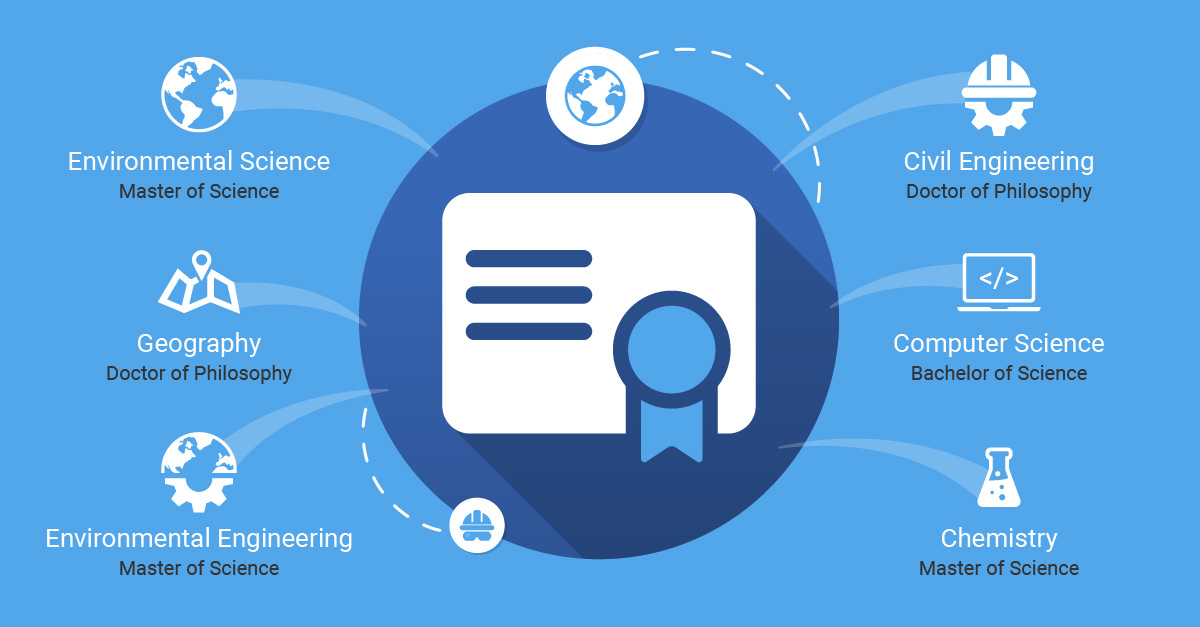
Master of Applied Science
Associate’s
Bachelor of Science
Certifications
At Locus, we understand the unique requirements of EHS managers. More than many, EHS managers are dealing with a wide range of duties instead of a few pointed ones. With so many responsibilities, it can be hard at times to stay on top of your organization’s EHS needs. In this blog we highlight a few common compliance-related issues that should resonate with most EHS managers and the steps we’ve taken to help you with them.

They say it takes a village to raise a child, but it also takes a village to keep up with your organization’s regulations. If you are dealing with compliance, then chances are you’ve not been the first to know about a regulatory change, or you’ve found out about one later than you would have liked.
When you’re getting notifications from OSHA and the DOT and you’re checking specific permits and getting letters and emails about changes, sometimes it can all be too much. With Locus, you have the added benefit of an extra set of eyes, well… multiple sets of eyes. Our team keeps up with every rule and regulation used in our applications to further assist you with the breadth of information you have to manage. Locus EHS software is also integrated with RegScan, giving users seamless real-time access to current EHS regulations. This will allow Locus users to customize a watchlist in RegScan to quickly and readily view EHS regulations relevant to them.

When you have to worry about ever-changing costs that touch several parts of your business, the last thing you need is a gated product update from your EHS software vendor. With Locus’ SaaS model, you see reduced implementation costs and no costly upgrades – everyone is on the same version. And since everything is in one place, you have a reduced amount of wasted time finding information and making it actionable.
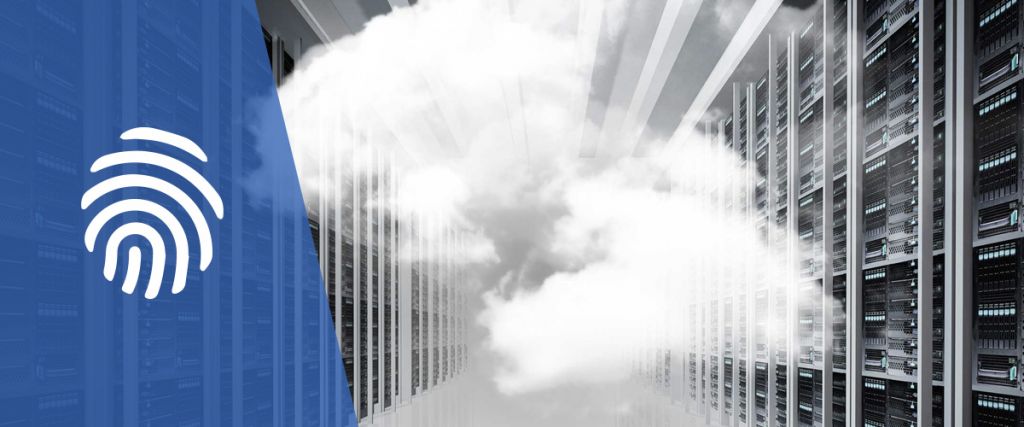
EHS managers deal with sensitive data, ranging from social security numbers to workman’s comp issues. Not taking proper care of this information can be anything from a PR debacle to a legal battle. With Locus, you have the peace of mind in knowing that your data is stored in entirety on the most secure cloud, Amazon Web Services (AWS). Not only that, but you have extensive security and admin access options, so you can have the relief in knowing only those with privileges can see certain information.

Whether you’re looking for purchase documentation of PPEs or you need to reference yesterday’s GHG numbers, you need access to that data without having to wade through multiple applications. And with all of your data stored in one secure repository, not only can it be accessed quickly, but it can be incorporated with other tools like automated reporting.
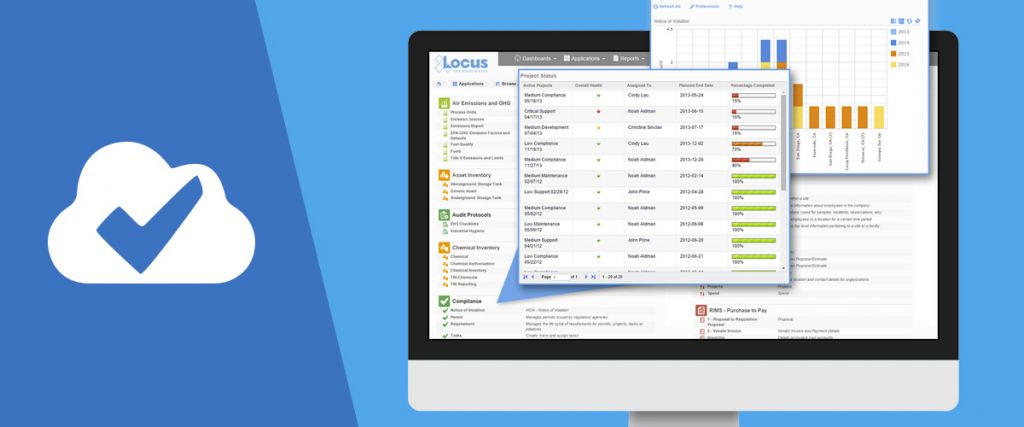
Are you still dealing with a different filing cabinet or file folder for each type of compliance? Not having your compliance data consolidated into one application means wasted time and time spent re-entering information (possibly incorrectly). Locus combines water, air, hazardous waste, DOT, PPE, workman’s comp, incidents, and more into one streamlined application to help with your organization and efficiency.
We are determined to support the needs of the user, you, first. By focusing on product development and customer service first, we feel that we have created a software as a service model that is both flexible and time-saving. If you are experiencing any of these issues with your current provider, we ask that you speak with a Locus representative today for a consultation or in-depth demo of what we can offer.
Regardless of the size of your organization or the industry you’re in, chances are that right now artificial intelligence can benefit your EHS&S initiatives in one way or another. And whether you are ready for it or not, the age of artificial intelligence is coming. Forward-thinking and adaptive businesses are already using artificial intelligence in EHS&S as a competitive advantage in the marketplace to great success.
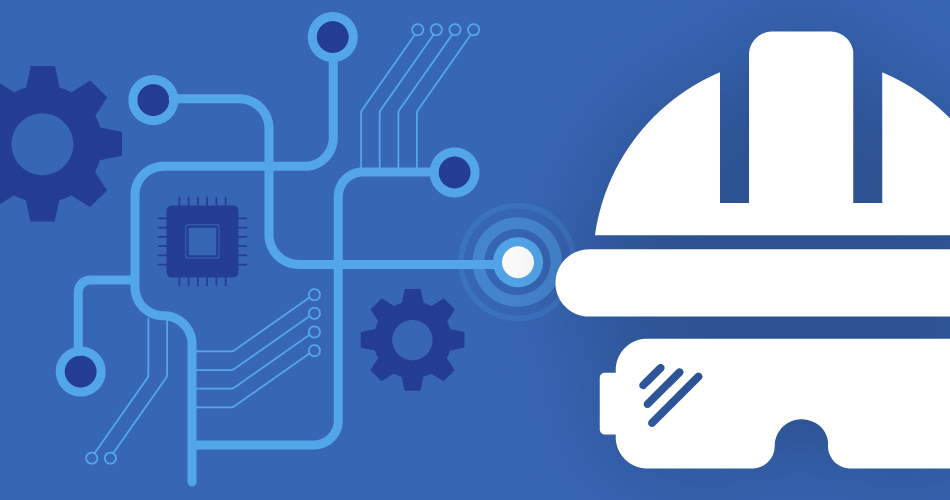
With modern EHS&S software, immense amounts of computing power, and seemingly endless cloud storage, you now have the tools to achieve fully-realized AI for your EHS&S program. And while you may not be ready to take the plunge into AI just yet, there are some steps you can take to implement artificial intelligence into your EHS&S program in the future.
Perhaps the best aspect of preparing for AI implementation is that all of the steps you take to properly bring about an AI system will benefit your program even before the deployment phase. Accurate sources, validated data, and one system of record are all important factors for any EHS&S team.
Used alongside big data, AI can quickly draw inferences and conclusions about many aspects of life more efficiently than with human analysis, but only if your sources pull accurate data. Accurate sources data will help your organization regardless of your current AI usage level. That’s why the first step to implementing artificial intelligence is auditing your data sources.
Sources pulling accurate data can be achieved with some common best practices. First, separate your data repository from the process that analyzes the data. This allows you to repeat the same analysis on different sets of data without the fear of not being able to replicate the process of analysis. AI requires taking a step away from an Excel-based or in-house software, and moving to a modern EHS&S software, like Locus Platform that will audit your data as it is entered. This means that anything from SCADA to historical outputs, samples, and calculations can be entered and vetted. Further, consider checking your data against other sources and doing exploratory analysis to greater legitimize your data.
AI requires data, and a lot of it—aggregated from multiple sources. But no amount of predictive analysis or machine learning is going to be worth anything without proper data validation processes.
Collected data must be relevant to the problem you are trying to solve. Therefore, you need validated data, which is a truly difficult ask with Excel, in-house platforms, and other EHS&S software. Appropriate inputs, appropriate ranges, data consistency, range checks (to name a few)—are all aspects of data that is validated in a modern EHS&S software like Locus Platform. Without these checks inherent to a platform, you cannot be sure that your data, or your analyses are producing useful or accurate results.
Possibly the best reason to get started with AI is the waterfall effect. As your data uncovers hidden insights and starts to learn on its own, the more accurate your new data will be and the better your predictions will become.
A unified system of record and a central repository for all data means that you see an immediate increase in data quality. Starting with AI means the end of disconnected EHS&S systems. No more transferring data from one platform to another or from pen and paper, just fully-digitized and mobile-enabled data in one platform backed up in the cloud. You also gain the added benefit of being able to access your data in real-time, incorporate compliance/reporting on the fly, and save time and resources using a scalable solution instead of a web of spreadsheets and ad-hoc databases.
Whether you are ready for AI or not, investing in these otherwise useful steps are necessary for any program looking to harness the power of artificial intelligence. When you are ready to take that next step, you will be well on the path to AI implementation, with a solid data infrastructure in place for your efforts.
To learn more about artificial intelligence, view this NAEM-hosted webinar led by Locus experts, or read our study on predicting water quality using machine learning.
299 Fairchild Drive
Mountain View, CA 94043
P: +1 (650) 960-1640
F: +1 (415) 360-5889
Locus Technologies provides cloud-based environmental software and mobile solutions for EHS, sustainability management, GHG reporting, water quality management, risk management, and analytical, geologic, and ecologic environmental data management.
